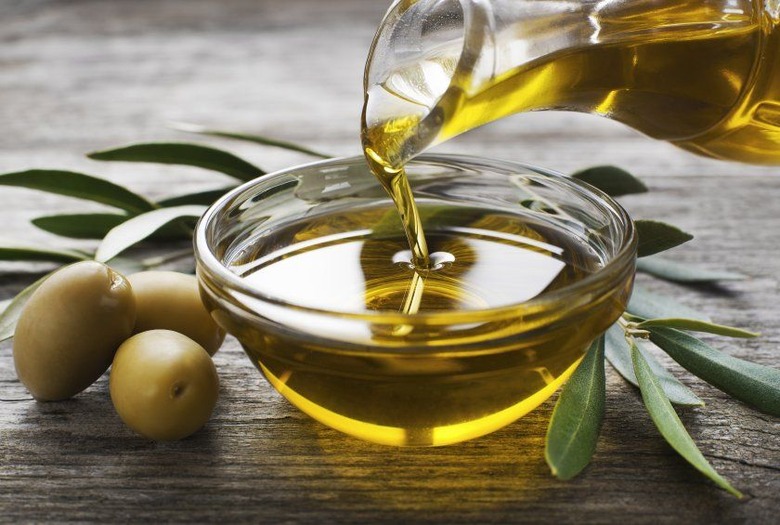How Can You Tell If Your Olive Oil Is Counterfeit?
You may not realize it, but there's a huge black market out there for counterfeit olive oil. In fact, reported on a recent episode of 60 Minutes, about 70 percent of all the olive oil you'll encounter is inauthentic in some way. Studies have found that at least 55 percent of extra virgin olive oil fails to meet extra-virgin requirements, and in others chlorophyll and olive scent are added to make subpar oil appear higher-quality. It's all olive oil, for the most part; it's just not extra virgin olive oil.
What's the easiest way to tell if that bottle of extra virgin olive oil is counterfeit? The best thing to do is go to a specialty store and get your hands on the real deal, which usually sells for quite a bit more than what you find at supermarkets. Real extra virgin olive oil has a pronounced grassy, peppery smell and a slightly acidic flavor reminiscent of olives. If your store-bought oil smells waxy or slick, it's probably not legit. It also shouldn't be bright green; only super-fresh oils are green, so that color means that chlorophyll has been added. If you swirl it in a glass it should be more viscous than vegetable oil.
Real, high-quality extra virgin olive oil is a flavor bomb, and if you've never had it you most likely don't even realize (pay attention to the oil that's served with the bread the next time you go to a good Italian restaurant). If you're just looking for something to cook with or use in salad dressings, then there's no reason to spend $20 on a bottle of the really good stuff. But if you want something to drizzle over a pasta dish or fresh mozzarella, or to just enjoy with some rustic bread, then we suggest you go out of your way to track down real extra virgin olive oil. You'll know it once you taste it.
